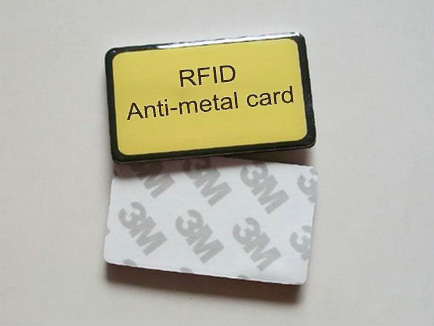The difference between rfid anti-metal tag and rfid electronic tag is that the RFID anti-metal tag adds an anti-metal material to the original basis. This material can prevent the tag from sticking to metal objects and failing. The tag is called rfid anti-metal tag.
The anti-metal material is an electronic tag encapsulated by a special anti-magnetic wave-absorbing material, which technically solves the problem that the electronic tag cannot be attached to the metal surface. The product is waterproof, acid-proof, alkali-proof, anti-collision, and can be used outdoors. Such as: Made of durable flame retardant laminate material, which can withstand high temperatures of 200°C (can be put in oil), can withstand vibration and mechanical shock, and can resist chemical dangerous products such as sulfuric acid and salt water. The main features of RFID anti-metal tags are as follows:
1. First of all, it has a strong anti-metal performance, can withstand high temperatures, can withstand temperatures up to 200 degrees Celsius, and can withstand mechanical shocks and strong vibrations.
2. RFID anti-metal tags have a very strong resistance to chemical substances, such as hydrochloric acid and sulfuric acid. RoHS-certified products will have a stronger protection level than other similar products.
3. It can work in a high temperature environment with stable performance, which is very suitable for IT assets that require small RFID tags, such as laptops or tablets.
4. Comply with ISO15693 and ISO18000-3 standards.
5. RFID anti-metal tags attached to metal can obtain good reading performance, even longer than the reading distance in the air. With a special circuit design, this type of electronic tag can effectively prevent metal interference to radio frequency signals. The outstanding performance of the real anti-metal electronic tag is: the reading distance attached to metal is longer than the reading distance without metal, this is Excellent result of overall design.

Application range of RFID anti-metal tag:
1. It can be used for IT asset tracking. Its smooth shell can be installed into the exposed parts of enterprise IT servers and equipment.
2. It is suitable for use in outdoor power equipment inspection, iron tower and telephone pole inspection, elevator inspection, pressure vessel cylinder gas cylinder, product follow-up inspection of various electric power and household equipment, asset management, logistics management, auto parts process management, and slaughter Line management, etc.
3. It can be used for follow-up inspection of recyclable transport items, such as pallets, containers and handbags.
4. It can be used in warehouse management applications. It can identify a single shelf and read it remotely through a reader, which meets the user's visualization requirements for traditional bar code systems.
The benefits of using RFID anti-metal tags:
One: Users can customize the standard data of RFID anti-metal electronic tags to read and write, making the special application system more efficient.
Two: RFID anti-metal tag is suitable for frequency hopping working mode and has super anti-interference ability.
Three: The effective reading distance of RFID anti-metal tags can reach more than 8 meters (related to the reader and antenna), 2056 bits memory capacity, and the only 94 bits ID number in the world.
Four: RFID anti-metal electronic tags adopt ultra-wide working frequency band design, which not only conforms to relevant industry regulations, but also enables flexible development and application.
Five: It can read and write multiple RFID anti-metal tags at the same time (up to 50 pieces per second) without being restricted and affected by the number of tags in the work area.
Six: The 1960 bits storage area is for users to perform encrypted read, write, erase and rewrite operations, and a permanent special word area dedicated to designated users is also opened.
Seven: RFID anti-metal electronic tags do not require batteries, the memory can be repeatedly erased and written for more than 10,000 times, the effective service life is more than ten years, and the cost performance is higher.






